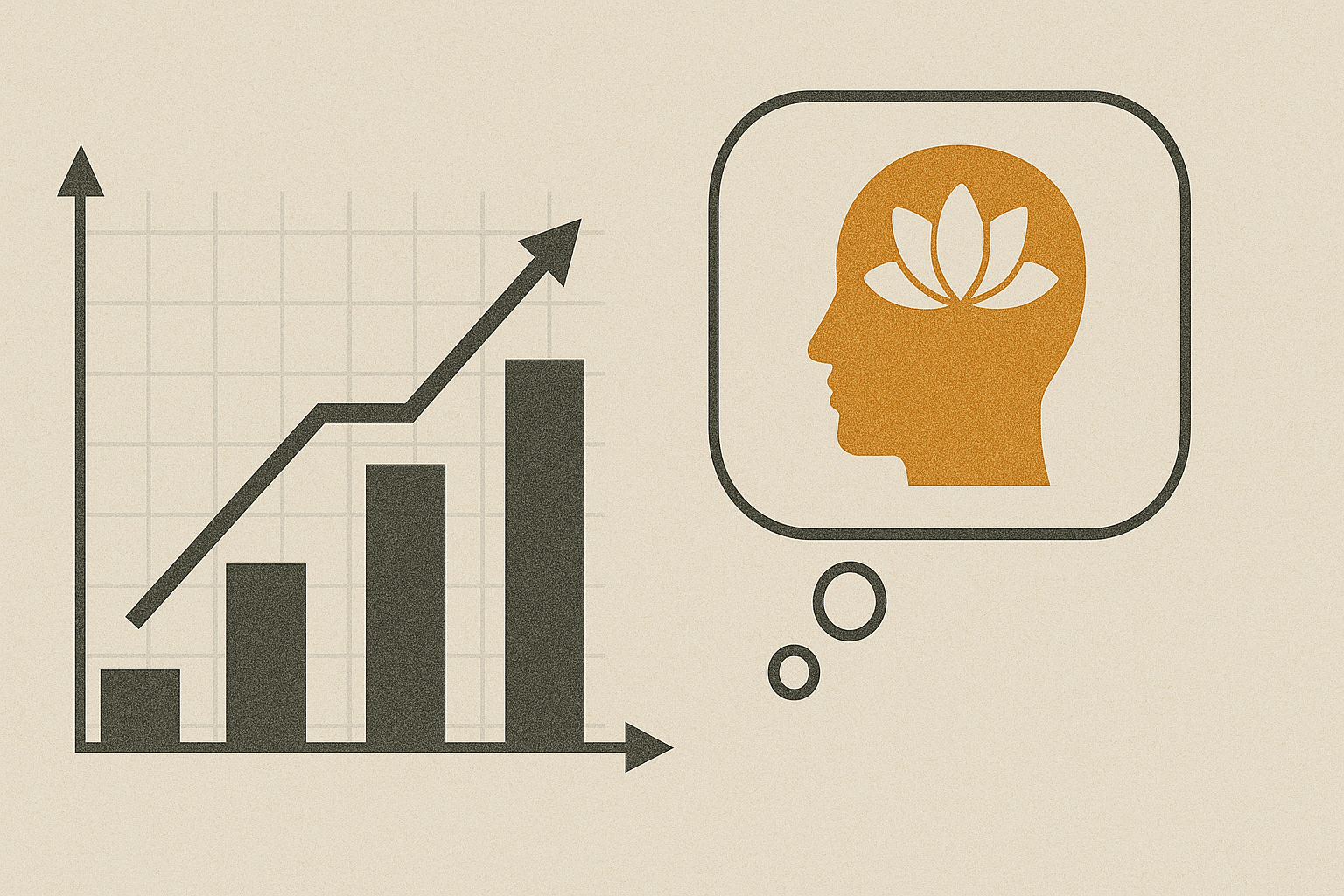Carla always came to our sessions prepared. Bullet points. Status updates. Action items. On paper, she was crushing it. But under the surface, something wasn’t landing. She was moving fast, executing well, but repeating the same leadership patterns that were burning her out, holding her team back, and giving her the same coaching outcomes.
Halfway through one session, I paused. She was already launching into her next strategy when I gently asked,
“What’s happening in your body right now?”
She blinked. “I’m not sure. I don’t usually think about that.”
So we sat. Just for 30 seconds. Eyes closed. Breath in. Breath out.
And when she opened her eyes, something had shifted.
That moment—quiet, subtle, still—marked the beginning of a different kind of coaching journey. One that wasn’t just about goals, but about grounded awareness. Not just insight, but integration.
Why Mindfulness in Coaching?
Mindfulness isn’t about slowing down for the sake of it. It’s about creating the conditions for transformation of our coaching outcomes. It helps clients tune in to their internal experience, disrupt automatic behaviors, and make decisions from presence—not autopilot.
In coaching, mindfulness becomes the bridge between awareness and action.
Because insight without awareness is fleeting. And action without presence often reinforces the same habits we’re trying to change.
The Neuroscience of Mindfulness
When clients practice mindfulness—even briefly—it changes the way their brain responds to stress, attention, and decision-making. Here’s what’s happening beneath the surface:
- Prefrontal cortex activation: The brain’s executive center becomes more engaged, supporting reflection and emotional regulation.
- Amygdala deactivation: The brain’s fear center quiets down, lowering reactivity and defensiveness.
- Increased connectivity between the default mode network and salience network, which helps integrate self-awareness with focus and behavior.
In short, mindfulness doesn’t just make coaching feel better—it makes the brain more coachable.
Back to Carla: A Shift Toward Presence
After that first pause, Carla began noticing more. She’d catch herself rushing through answers and circle back. She began starting meetings with 60 seconds of silence. She stopped reacting immediately when her team resisted change—and started asking questions instead.
Our coaching shifted too. Less about tactical wins. More about intentional leadership.
And by the end of the quarter, something beautiful happened:
She wasn’t just checking off goals. She was living them—with clarity, choice, and care, and her coaching outcomes reflected that.
How to Integrate Mindfulness Into Coaching (Without Losing Momentum)
You don’t need to lead full meditations to bring mindfulness into your practice. You just need to make space.
1. Begin with a Centering Moment
Before launching into the agenda, invite a few deep breaths.
💬 Coach Prompt:
“Let’s just take 30 seconds to arrive. Eyes open or closed. Noticing the breath.”
✅ Why it works: Breath anchors attention in the present and prepares the brain for reflection.
2. Use Somatic Check-Ins
Help clients connect to their physical experience. Often, the body tells the truth before the mind does.
💬 Coach Prompt:
“Where do you feel that tension or excitement in your body?”
“What’s your posture telling you right now?”
✅ Why it works: This activates the insula, increasing interoception—our internal awareness—which boosts self-regulation.
3. Create Space Between Stimulus and Response
When a client is stuck in reaction mode, invite them to pause before answering a tough question or making a decision.
💬 Coach Prompt:
“Let’s sit with that for a moment. No rush.”
“Notice what comes up before we move forward.”
✅ Why it works: Mindful pausing re-engages the prefrontal cortex, reducing impulsive decision-making.
4. Reflect on Experience, Not Just Outcome
Instead of only focusing on results, ask what it felt like to make a choice, lead a meeting, or hold a boundary.
💬 Coach Prompt:
“What did you notice in yourself during that conversation?”
“How did it feel to stay quiet instead of filling the silence?”
✅ Why it works: Encourages metacognition—thinking about thinking—which deepens learning and builds behavioral flexibility.
Coaching Outcomes Enhanced by Mindfulness
Coaching Focus | Mindfulness Benefit |
Emotional Intelligence | Increases self and social awareness |
Stress Management | Reduces reactivity and improves regulation |
Leadership Presence | Cultivates calm, grounded communication |
Strategic Thinking | Improves clarity and long-term focus |
Behavior Change | Increases awareness of triggers and habits |
Final Thought: Stillness Is a Skill
In a world obsessed with speed and output, mindfulness in coaching is a radical act. It invites clients to stop—just long enough to notice. And in that noticing, change begins.
Because sometimes, the most powerful shift doesn’t come from pushing harder.
It comes from getting quiet enough to hear the signal beneath the noise.
And when a client moves from awareness to action—from autopilot to intention—
that’s not just coaching.
That’s transformation.





